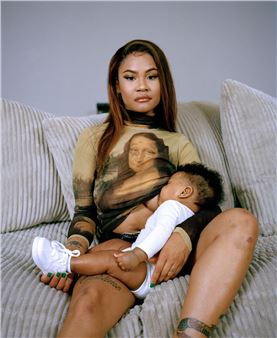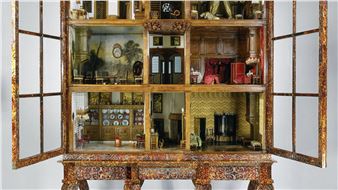New Realities. Photography in the Ninenteenth Century
This summer the Rijksmuseum is presenting a major retrospective of 19th-century photography. Three hundred photos from the museum’s own collection will show just how varied photography was immediately after its invention in 1839. The exhibition will include portraits, nudes, cityscapes and travel photos, as well as scientific and commercial photography, and the first amateur snapshots.
The exhibition New Realities will feature work from leading photographers including William Henry Fox Talbot, Julia Margaret Cameron, Roger Fenton and Gustave Le Gray, alongside anonymous surprises which have never previously been shown. One highlight will be work by the first woman photographer, Anna Atkins, who published the first book illustrated with photographs. The Dutch photographers George Hendrik Breitner and Willem Witsen will also be represented.
Today photography is a universal language that everyone speaks and understands, but this was far from the case in the early days of the medium. There is a vast contrast between the casual snapshots of today and the experiments of the earliest photographers, which took such great effort to produce. This new and magical medium caused a revolutionary shift away from the styles of imagery people were accustomed to seeing in paintings, drawings or engravings. Photography introduced an entirely new way of seeing and representing reality.
New Realities will show how people set out with their camera to explore the world, from personal life to the unfamiliar peoples of distant Asia. X-rays and photos of botanical collections will illustrate the use of photography in the scientific world. There will also be examples of practical applications such as police photographs of criminals, and the first uses of photography in advertising. The exhibition will cast light on how photography established its position as an artistic medium, initially with subjects and compositions derived from painting. Finally, we will see how amateur photography took off and the medium came to be used increasingly as a source of entertainment.

Recommended for you
This summer the Rijksmuseum is presenting a major retrospective of 19th-century photography. Three hundred photos from the museum’s own collection will show just how varied photography was immediately after its invention in 1839. The exhibition will include portraits, nudes, cityscapes and travel photos, as well as scientific and commercial photography, and the first amateur snapshots.
The exhibition New Realities will feature work from leading photographers including William Henry Fox Talbot, Julia Margaret Cameron, Roger Fenton and Gustave Le Gray, alongside anonymous surprises which have never previously been shown. One highlight will be work by the first woman photographer, Anna Atkins, who published the first book illustrated with photographs. The Dutch photographers George Hendrik Breitner and Willem Witsen will also be represented.
Today photography is a universal language that everyone speaks and understands, but this was far from the case in the early days of the medium. There is a vast contrast between the casual snapshots of today and the experiments of the earliest photographers, which took such great effort to produce. This new and magical medium caused a revolutionary shift away from the styles of imagery people were accustomed to seeing in paintings, drawings or engravings. Photography introduced an entirely new way of seeing and representing reality.
New Realities will show how people set out with their camera to explore the world, from personal life to the unfamiliar peoples of distant Asia. X-rays and photos of botanical collections will illustrate the use of photography in the scientific world. There will also be examples of practical applications such as police photographs of criminals, and the first uses of photography in advertising. The exhibition will cast light on how photography established its position as an artistic medium, initially with subjects and compositions derived from painting. Finally, we will see how amateur photography took off and the medium came to be used increasingly as a source of entertainment.
Contact details


 ARTISTS
ARTISTS















